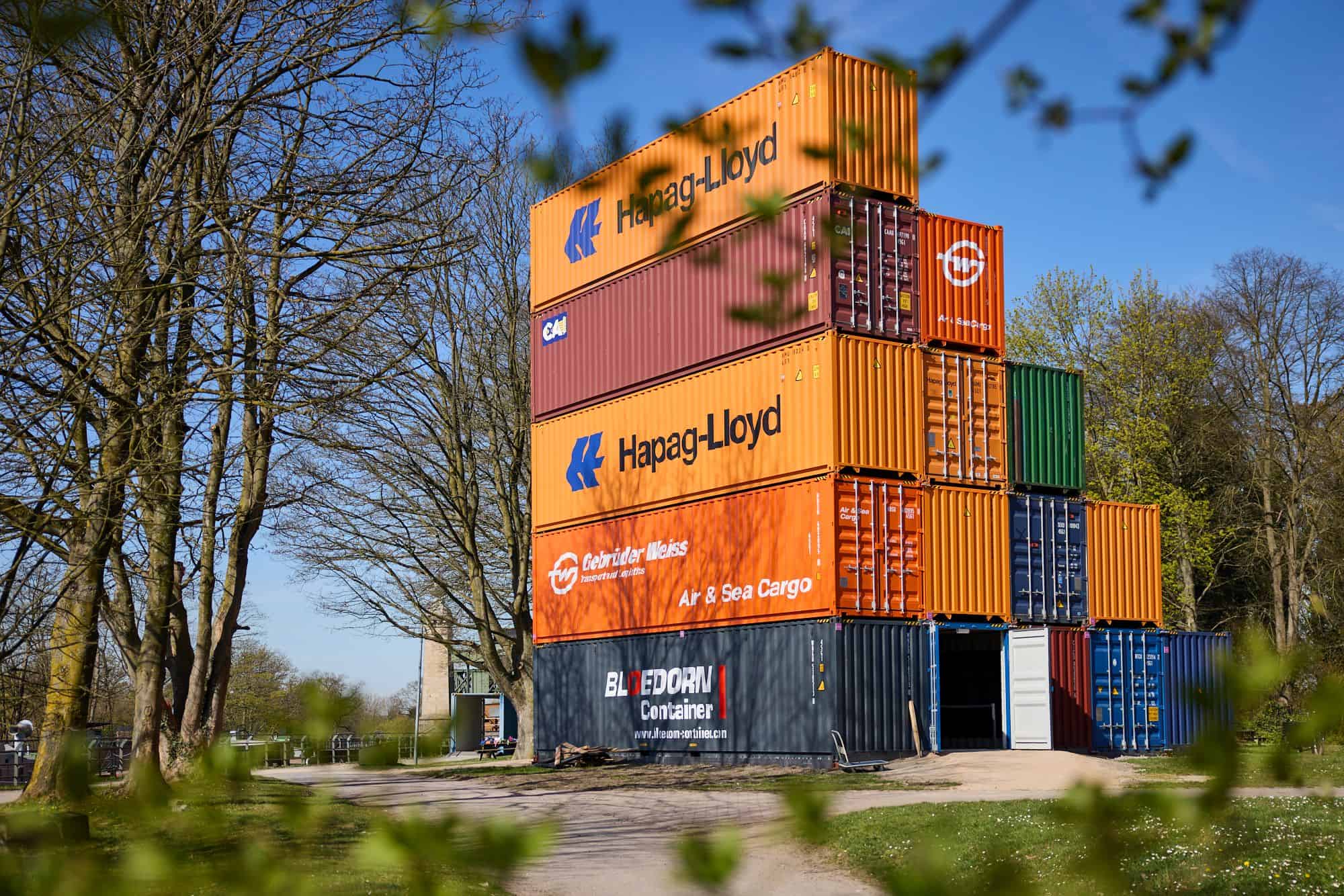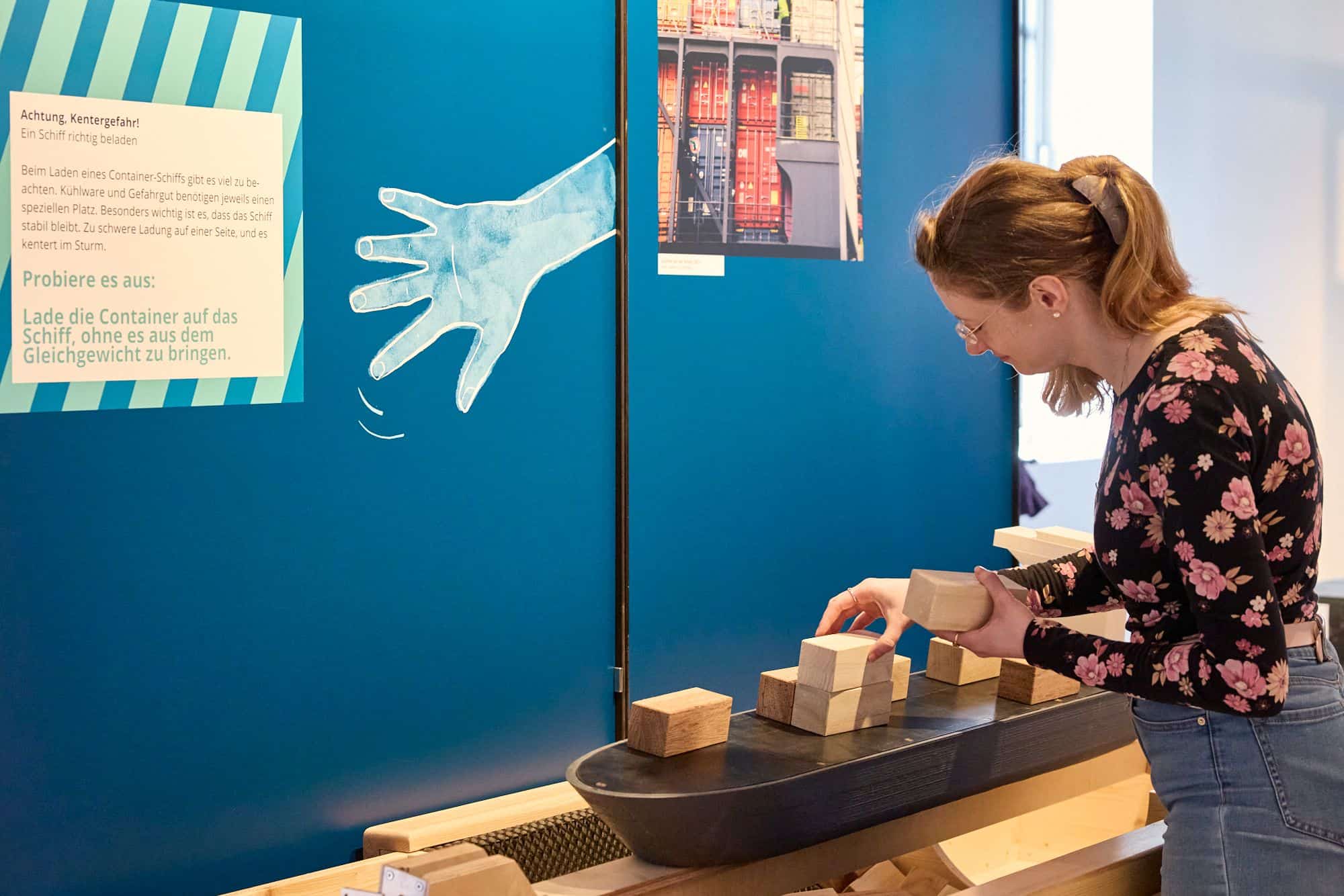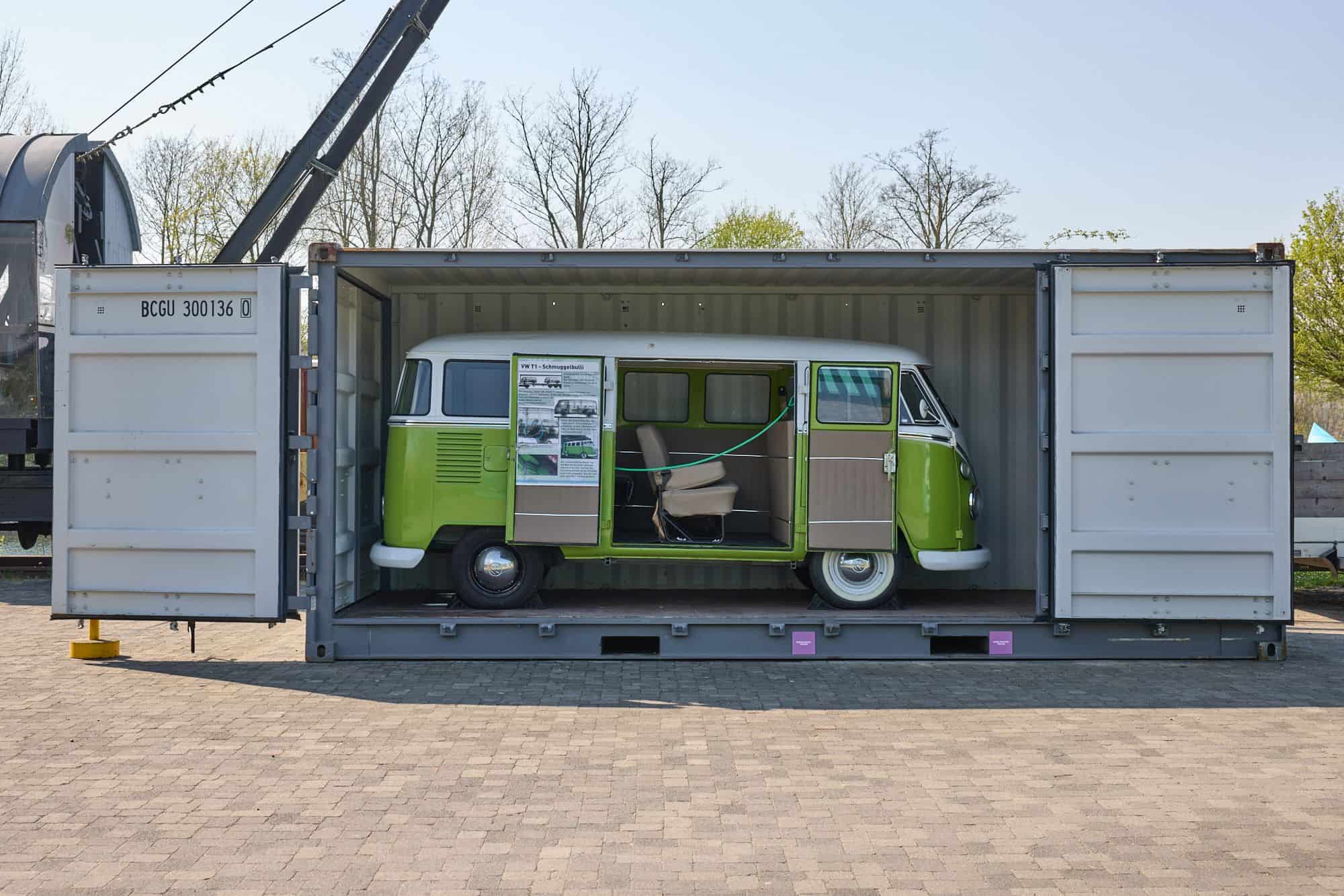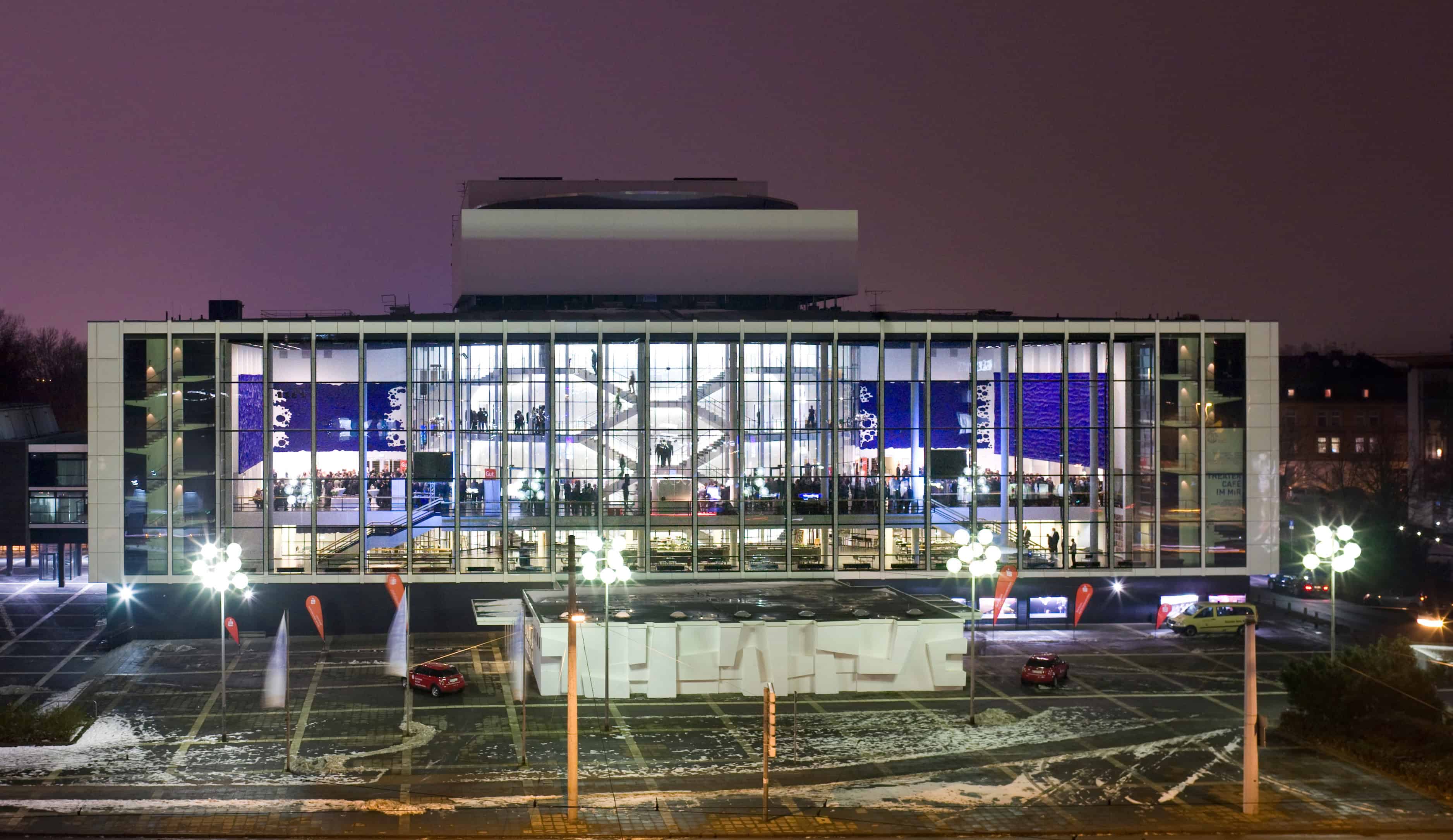
For those XXL ships that can carry more than 25,000 containers on board, the comparatively narrow Dortmund-Ems Canal is definitely not considered as a route. Nevertheless, the local lock mechanism Henrichenburg in the Waltrop lock park is now the scene of a (albeit modest) collection of containers.
15 containers are stacked into the step-like structure "Global Steps". The lowest level serves as an exhibition space and is one of the stations of the exhibition. Here, as well as on the exhibition ship "Ostara" and in the outdoor area, the LWL Museum Ship Lift Henrichenburg presents objects, texts, photos, films, and graphics related to the mobile box. Daily life on board container ships is just as much a subject of the exhibition as global trade flows and supply chains, smuggling and accidents, as well as the use of containers in architecture and art.

In 1956, the American entrepreneur Malcolm P. McLean sent a ship full of containers on its journey for the first time. The idea quickly caught on. Because the boxes (which come in several sizes) comply exactly with the ISO standard 668, the entire logistics process is standardized. This saves time and money. Today, 90 percent of all goods traded between the continents are transported in this way – this applies to shipping as well as rail and truck. Whether it's a smartphone, jeans, or kitchen appliance – everything is included in these flexible containers. Unfortunately, they also serve as loopholes for drug trafficking. This fatal aspect of globalization is illustrated by a VW bus loaded with cocaine that had been parked in a container. Fortunately, the smuggling was uncovered in the Hamburg port.



